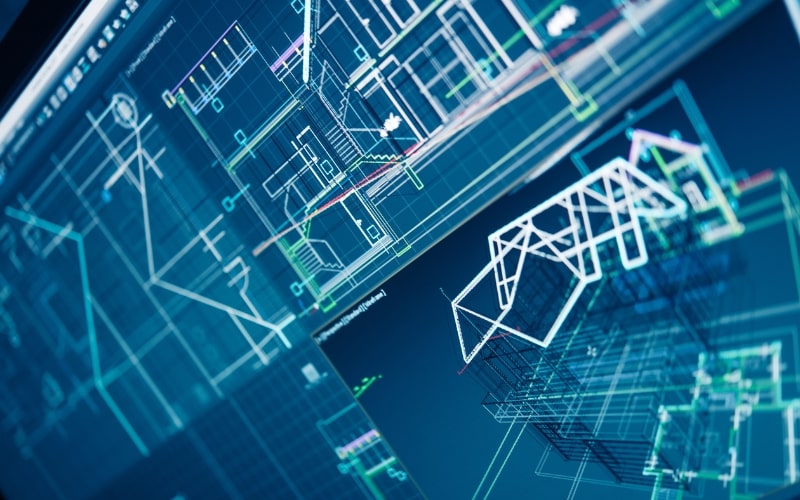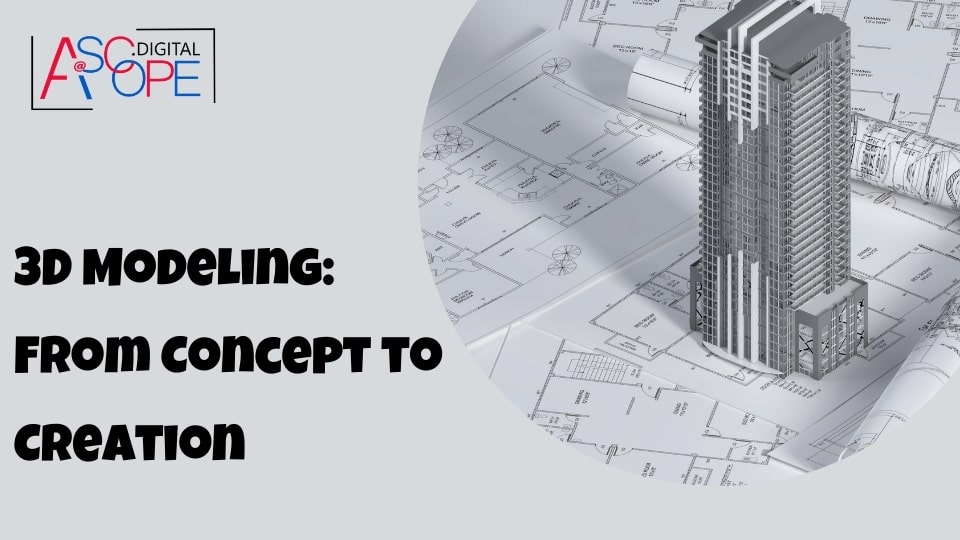3D modeling has revolutionized the way we create, visualize, and interact with digital content. From movies and video games to product design and architecture, 3D modeling is an essential tool in various industries. This blog explores the journey of 3D modeling, from the initial concept to the final creation, highlighting key steps, techniques, and tools used by professionals.
The Importance of 3D Modeling

3D modeling allows for the creation of detailed, lifelike representations of objects and environments. This capability is crucial for visualizing ideas that are otherwise difficult to convey. In industries like gaming and film, 3D models bring characters and worlds to life, enhancing storytelling and user experience. In product design, 3D models help in prototyping and testing, reducing the time and cost associated with physical models.
Conceptualization: The First Step
Every 3D model starts with an idea. Conceptualization involves brainstorming, sketching, and defining the overall vision of the model. This stage is crucial as it sets the foundation for all subsequent steps. Artists and designers often create rough sketches or storyboards to visualize their concepts. Tools like Adobe Photoshop and SketchBook Pro are popular for this stage, allowing for quick and flexible ideation.
Research and Reference Gathering
Before diving into the modeling process, it’s essential to gather references. Whether it’s images, videos, or physical objects, references provide valuable information about proportions, textures, and details. For instance, creating a realistic human character requires understanding anatomy, while modeling a car necessitates studying its mechanical parts and design features.
Choosing the Right Software
Selecting the appropriate 3D modeling software is a critical decision that impacts the workflow and outcome. Popular options include Blender, Autodesk Maya, 3ds Max, and ZBrush. Each software has its strengths: Blender is known for its versatility and free access, Maya for its industry-standard status in animation, 3ds Max for architectural visualization, and ZBrush for detailed sculpting.
Building the Base Model
The base model, or the initial mesh, serves as the skeleton of the 3D object. This stage involves creating basic shapes and structures that define the model’s form. Techniques like box modeling, where the model starts as a simple cube, and edge modeling, which involves creating outlines and filling in details, are commonly used. Precision and attention to detail are crucial at this stage to ensure a solid foundation.
Sculpting and Detailing
Once the base model is complete, the next step is to add details and refine the shape. Sculpting tools like ZBrush allow artists to create intricate details, such as wrinkles on a character’s face or textures on a surface. This process is akin to digital clay sculpting, where the model is gradually refined to achieve the desired level of detail. Techniques like displacement mapping and normal mapping enhance the realism of the model by adding surface details.
Texturing and Material Application
Textures and materials bring the 3D model to life by adding color, patterns, and surface properties. UV mapping is a crucial step in this process, where the 3D model’s surface is unwrapped into a 2D plane, allowing textures to be applied accurately. Tools like Substance Painter and Mari are popular for creating detailed textures. Material properties such as reflectivity, transparency, and roughness are defined using shaders, enhancing the model’s realism.
Rigging and Animation

For models intended for animation, rigging is a necessary step. Rigging involves creating a skeleton with joints and controls that allow the model to move. This process is critical for character models, enabling lifelike movements and expressions. Software like Autodesk Maya and Blender offer powerful rigging tools. Once rigged, the model can be animated using keyframes, motion capture data, or procedural animations.
Lighting and Rendering
Lighting and rendering are final steps that significantly impact the model’s appearance. Proper lighting enhances the model’s features and sets the mood of the scene. Techniques like global illumination and ray tracing create realistic lighting effects. Rendering converts the 3D model into a 2D image or animation. Rendering engines like Arnold, V-Ray, and Blender’s Cycles offer various options for achieving photorealistic results.
Post-Processing and Compositing
After rendering, post-processing and compositing are used to enhance the final output. This stage involves color correction, adding effects, and combining different render passes. Software like Adobe After Effects and Nuke are popular for post-processing. Compositing techniques, such as depth of field and motion blur, add realism and visual interest to the final image or animation.
Iteration and Feedback
3D modeling is often an iterative process. Feedback from peers, clients, or personal reviews helps identify areas for improvement. Iterating on the model, whether it’s adjusting proportions, refining details, or enhancing textures, is crucial for achieving the best possible result. This iterative process ensures that the final model meets the desired quality and aligns with the initial concept.
Case Studies and Real-World Applications
Examining case studies and real-world applications provides valuable insights into the 3D modeling process. For example, in the gaming industry, creating a character involves several stages, from concept art to final in-game model. Similarly, in architecture, 3D models help visualize buildings before construction, allowing for design adjustments and client presentations. These examples highlight the versatility and importance of 3D modeling across different fields.
Challenges and Solutions
3D modeling comes with its own set of challenges, such as managing complex details, optimizing models for performance, and ensuring compatibility across different software. Overcoming these challenges requires a combination of technical skills, creative problem-solving, and staying updated with industry trends and tools. Understanding common pitfalls and learning from experienced modelers can significantly improve the modeling process.
The Future of 3D Modeling
The future of 3D modeling is promising, with advancements in technology continually pushing the boundaries of what’s possible. Emerging technologies like virtual reality (VR) and augmented reality (AR) are creating new opportunities for 3D modeling. Real-time rendering and AI-driven tools are making the modeling process faster and more efficient. As these technologies evolve, the demand for skilled 3D modelers is expected to grow, opening up new possibilities in various industries.
Learning and Improving 3D Modeling Skills
Continuous learning and improvement are essential for staying competitive in the field of 3D modeling. Numerous resources are available for aspiring modelers, including online courses, tutorials, and communities. Platforms like Udemy, Coursera, and YouTube offer comprehensive courses on different aspects of 3D modeling. Participating in online communities and forums, such as Blender Artists or CGSociety, provides opportunities for feedback, collaboration, and staying updated with industry trends.
Benefits of 3D Modeling for Businesses
Implementing 3D modeling in your business strategy offers a multitude of benefits that can significantly enhance your company’s growth and customer engagement. One of the primary advantages is the ability to create highly detailed and realistic product visuals, which can be used for marketing and sales purposes. These visuals provide customers with a clear understanding of the product, its features, and its functionality, leading to increased customer confidence and satisfaction. Additionally, 3D models can be integrated into interactive experiences, such as virtual showrooms or augmented reality applications, offering customers an immersive way to explore products. This level of engagement not only captivates potential buyers but also sets your brand apart from competitors. Moreover, high-quality 3D models can improve your website’s search engine optimization (SEO), making your site more attractive to search engines and, thus, improving traffic and sales for your website. Read more on the other reasons why your website isn’t getting traffic. By leveraging the power of 3D modeling, businesses can create a more compelling and effective digital presence.
Conclusion
3D modeling is a fascinating and dynamic field that combines art, technology, and creativity. From the initial concept to the final creation, the journey of 3D modeling involves various stages, each requiring specific skills and tools. Understanding the entire process, from conceptualization to rendering, is crucial for creating high-quality 3D models. As technology continues to advance, the possibilities in 3D modeling are endless, making it an exciting field for artists, designers, and engineers alike. Whether you’re a beginner or an experienced professional, continuous learning and experimentation are key to mastering the art of 3D modeling.


